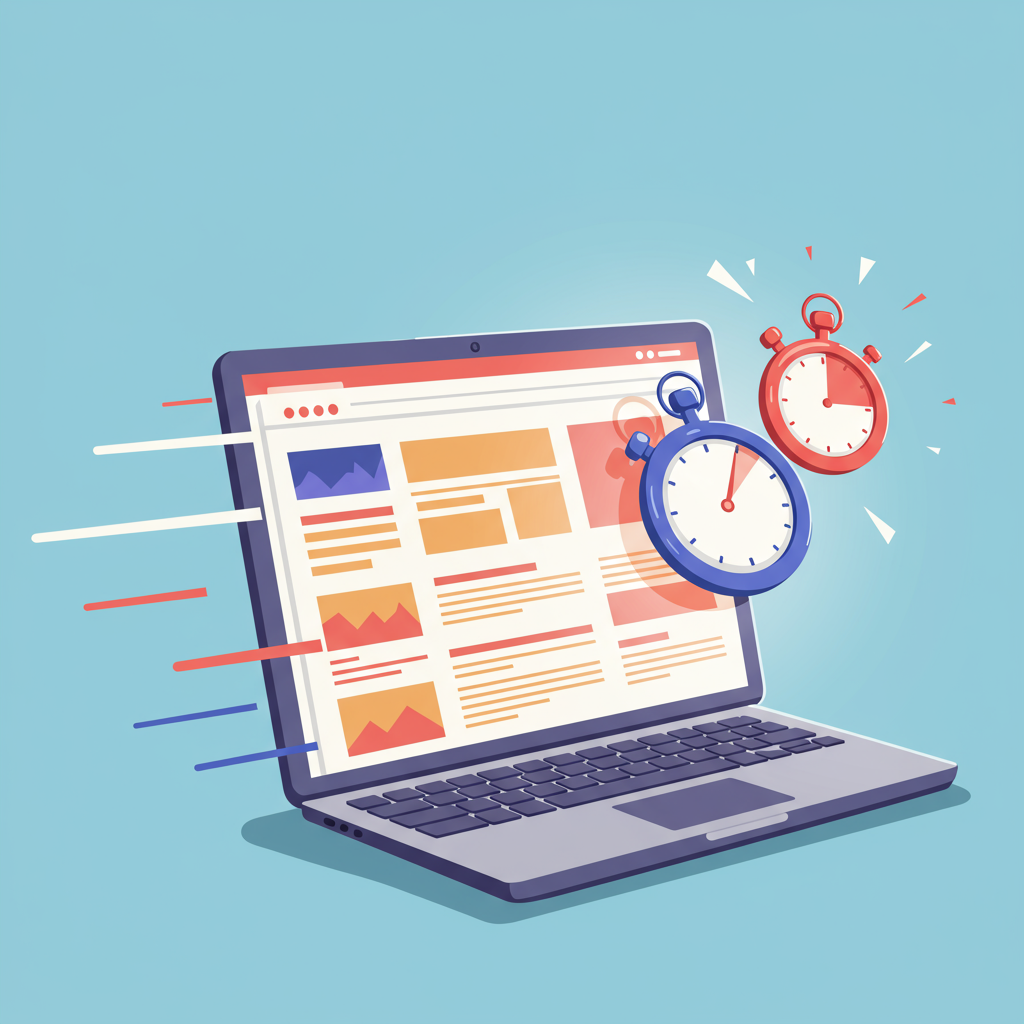A Comprehensive Guide to Boosting Your Online Store’s Performance and Conversions
As a merchant, I know how much effort you pour into your Shopify store. You’ve curated products, designed beautiful pages, and crafted compelling descriptions. But there’s one crucial element that can make or break all that hard work: your store’s speed.
I’ve seen firsthand how a slow website can frustrate potential customers. They click away, often to a competitor, before your products even load. This isn’t just anecdotal; studies consistently show that even a one-second delay can significantly impact conversions.
Beyond conversions, speed is a major factor in search engine optimization (SEO). Google prioritizes fast-loading sites, meaning a sluggish store can hurt your rankings and make it harder for new customers to find you.
That’s why I’ve put together this comprehensive Shopify store speed optimization checklist. My goal is to empower you with actionable steps to make your store lightning-fast, improving user experience, boosting sales, and enhancing your SEO.
Before we dive into solutions, I always recommend understanding your current performance. Tools like Google PageSpeed Insights, GTmetrix, and Lighthouse are invaluable. They’ll give you a score and highlight specific areas for improvement.
The foundation of your store’s speed often lies in your theme. I always advise choosing a lightweight, well-coded theme. While free themes can be tempting, some premium themes are optimized for speed right out of the box.
I’ve noticed many merchants enable features or sections in their theme that they never actually use. Go through your theme settings and disable any unused sections, blocks, or apps that are integrated directly into the theme.
While customization is great, excessive or poorly coded custom CSS/JavaScript can weigh down your site. If you’ve hired a developer, I’d suggest asking them to ensure their code is optimized and minified.
In my experience, oversized and unoptimized images are the single biggest reason for slow Shopify stores. High-resolution images look great, but they can be massive files.
I strongly recommend compressing all your images before uploading them. Tools like TinyPNG, Compressor.io, or even Shopify apps can help. Aim for a good balance between quality and file size.
Consider using modern image formats like WebP. They offer superior compression without sacrificing quality. Shopify now supports WebP automatically for many themes, but it’s good to be aware of.
Ensure your images are sized appropriately for their display area. Don’t upload a 4000px wide image if it’s only displayed at 800px. Also, enable lazy loading, which means images only load when they enter the user’s viewport.
Shopify’s app store is fantastic, offering solutions for almost anything. However, I’ve seen stores crippled by too many apps, especially those that load scripts on every page.
My advice is to regularly audit your installed apps. Ask yourself: Do I still use this app? Is it essential? Can I achieve the same functionality with a lighter app or a built-in Shopify feature?
Don’t just disable apps; uninstall them completely. Even disabled apps can leave behind lingering code snippets that slow down your store.
If an app is only needed on specific pages (e.g., a review app on product pages, a chat widget on all pages), check if the app allows you to configure it to load only on those pages. This is a huge speed saver.
For those comfortable with code or working with a developer, minifying CSS and JavaScript files can make a difference. This process removes unnecessary characters (like spaces and comments) from the code, reducing file size.
I often see JavaScript files that aren’t critical for the initial page load blocking rendering. Deferring these scripts means they load after the main content, improving perceived load speed.
Custom fonts can add character to your brand, but they also add to your page’s load time. I recommend limiting the number of custom fonts you use and considering system fonts where appropriate.
If you must use custom fonts, ensure they are preloaded correctly. This tells the browser to fetch them early, preventing a “flash of unstyled text” (FOUT) and improving perceived performance.
If you use videos on your product pages or elsewhere, I strongly advise embedding them from platforms like YouTube or Vimeo rather than self-hosting. These platforms are optimized for streaming and delivery.
Beyond Shopify apps, you might have other third-party scripts for analytics, tracking, or marketing. Each script adds overhead. I recommend auditing these and ensuring they load asynchronously or are deferred.
A significant portion of your traffic likely comes from mobile devices. I always emphasize testing your store’s speed and responsiveness on various mobile devices. A fast desktop experience doesn’t guarantee a fast mobile one.
It’s important to remember that Shopify handles a lot of the heavy lifting, like server infrastructure and content delivery networks (CDNs). While you can’t control the server, optimizing your store’s assets is entirely within your power.
Speed optimization isn’t a one-time task. I encourage you to regularly monitor your store’s performance using the tools I mentioned earlier. New apps, theme updates, or content additions can all impact speed.
Implementing these steps might seem daunting at first, but even tackling a few key areas can yield significant improvements. A faster store means happier customers, better search rankings, and ultimately, more sales for your business.
What do you think about this article? Did you find these tips helpful for your Shopify store? I’d love to hear your thoughts and any strategies you’ve found effective!
I truly believe that investing time in speed optimization is one of the most impactful things you can do for your Shopify store’s long-term success. Start today, and watch your store fly!






